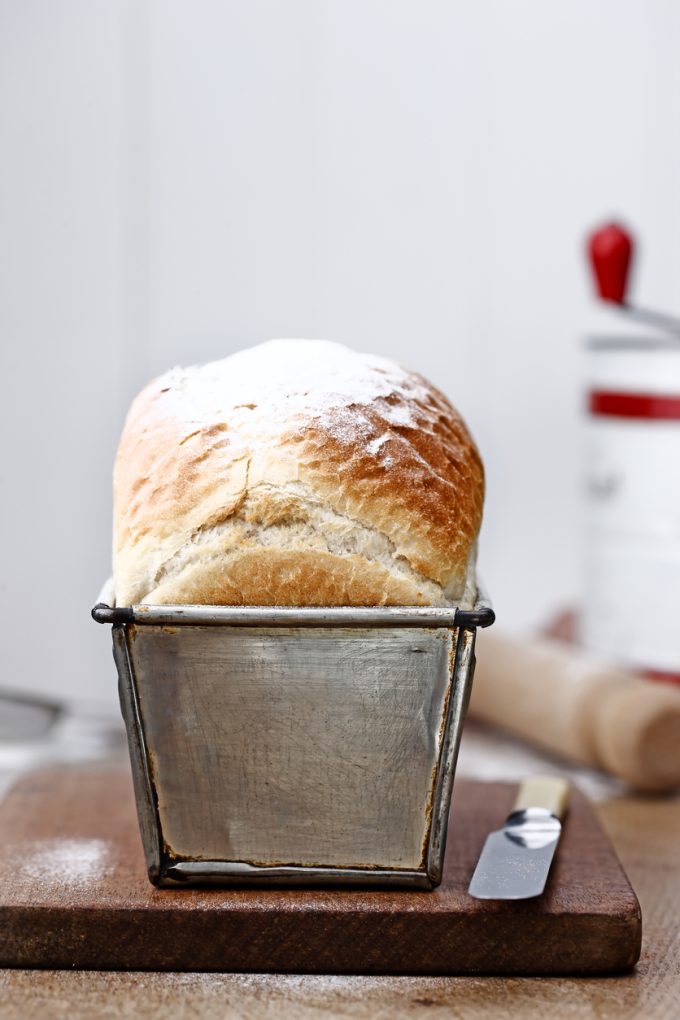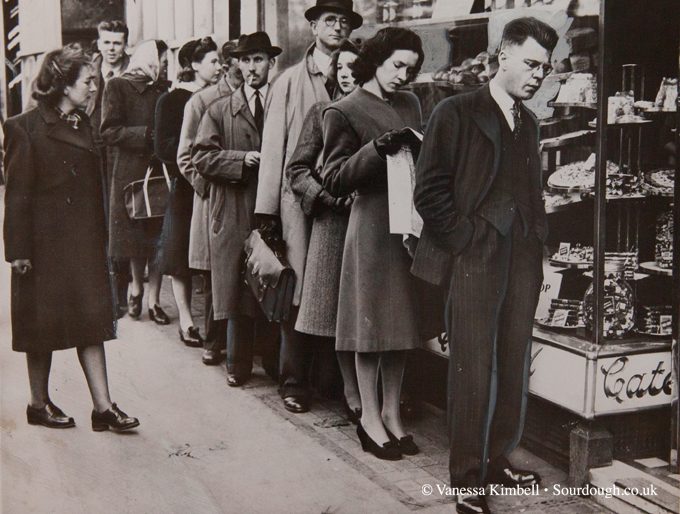I am a fan of Jamie Oliver, but this weekend I was disappointed by his two-ingredient homemade bread recipe this weekend. It is a simple and cost-effective recipe in the Mirror that, according to the statistics on the Mirror, reaches 32 million readers. However, in his choice to use white bread flour instead of wholegrain flour, he really misses the perfect opportunity to address key aspects of social justice and promote health.
The recipe uses only a 7g sachet of dried yeast and 1kg of strong bread flour. While the recipe is simple and cost-effective – with a 1.5 kg bag of strong white bread flour available for £1.30 and a box of 6x7g yeast sachets for 98p at Asda – it overlooks the potential for a more nourishing approach. I didn’t expect that Jamie would include sourdough – this was not his objective; the aim was clear – to empower people to bake low-cost delicious bread. What he missed was any mention that wholegrain flour is rich in fibre, antioxidants, vitamins, and minerals, providing more nourishment and protection against common cancers while regulating blood sugar response. Given that current figures indicate that the NHS is spending, evidence has shown that the NHS spends around £10 billion a year on diabetes – around 10% of its entire budget. A recent study published in the BMJ (2020) found that participants with higher total whole grain consumption had a 29% lower rate of type 2 diabetes compared to those with lower consumption. I am an optimist – so let’s pretend for a moment that 50% of the Mirror’s 32 million readers took up the challenge of switching to wholegrain bread, and based on the 29% reduction in type 2 diabetes risk.
In another recent study in cardiovascular disease “Intake of whole grain foods and risk of coronary heart disease in US men and women” published in BMC Medicine (2022), we can estimate the potential impact on the NHS if 16 million people (50% of the Mirror’s readers) switch to 100% wholegrain bread, assuming a similar relationship between whole grain consumption and coronary heart disease (CHD) risk in the UK population.
The study found that the hazard ratio (HR) of CHD risk corresponding to each one serving/day consumption of total whole grains was 0.93 (0.90-0.95). This means that each daily serving of whole grains was associated with a 7% reduction in CHD risk.
Bread maths. If 16 million people to switch to 100% whole grain bread, the potential savings for the NHS could be around £812.08 million/year million per year.

If we assume that 50% of the 32 million Daily Mirror readers read the recipes and took up baking, switching to wholegrain bread, then we have 16 million people making the change.
Potential savings from reduced type 2 diabetes cases for 16 million people: Risk reduction for type 2 diabetes with wholegrain intake: 29% UK population: 67.33 million 16 million / 67.33 million = 0.2376 (portion of the population represented by 16 million people) Potential savings for the NHS: £2.9 billion/year * 0.2376 = £689.04 million/year
Potential savings from reduced coronary heart disease cases for 16 million people: Risk reduction for coronary heart disease with wholegrain intake: 7% Potential savings for the NHS: £0.518 billion/year * 0.2376 = £123.04 million/year
Total potential savings for the NHS for 16 million Daily Mirror readers: £689.04 million/year (diabetes) + £123.04 million/year (CVD) = £812.08 million/year
This highlights the significant impact that promoting wholegrain bread consumption can have on public health and the economy.
This change in bread consumption would be a radical way to improve public health and the economy.
As the cost of living rises, people really do need support, and baking is an excellent way to reduce expenses while engaging in productive and meaningful activities. However, white flour lacks essential nutrients. That’s where the way we teach, according to the Baking as Lifestyle Medicine (BALM), comes in, offering a more comprehensive and health-conscious approach whilst delivering nourishing healthful bread.
BALM’s core principles promote whole-body support, dietary diversity, fermentation, antioxidant elevation, probiotic enrichment, and refined sugar reduction. By incorporating wholegrain flour and other nutritious ingredients into bread recipes, BALM provides a healthier alternative to Jamie Oliver’s recipe. Here are some suggestions on how Jamie could have improved his recipe to nourish, not just feed, people. So here are my suggestions. Swap white bread flour for wholegrain flour: Wholegrain flour is more nourishing, offering higher fibre content and essential nutrients. Jamie could have mentioned adding other ingredients, such as seeds and nuts, would boost the bread’s nutritional value with seeds like flax, chia, or sunflower and nuts like almonds or walnuts and highlight the importance of sharing bread as a way to foster community and connection, supporting mental health and well-being.
So I admit freely that my figures are hugely optimistic. I live in hope, however, don’t dismiss my thought process as unrealistic. I’ve done this calculation to highlight how powerful changing our bread could be in public health, and it is time that the people who have the most power take bread more seriously.
We banned white flour in the UK during World War 2
During World War II, the UK faced food shortages and strict rationing. As part of the government’s efforts to conserve resources and ensure adequate nutrition for the population, the sale of white flour was banned, and it was replaced with the so-called “National Loaf.”

The National Loaf was made from whole wheat flour, which retained all of the wheat’s bran and germ. This wholemeal flour had a higher nutritional content than white flour, as it contains more fibre, vitamins, and minerals. The National Loaf was also fortified with calcium to help address the potential nutritional deficiencies in the diet during wartime.
The health of the nation during this time showed some improvement, particularly in terms of nutritional deficiencies. Due to the rationing and the shift in the diet, people consumed less sugar, fat, and meat, and more vegetables, whole grains, and other nutrient-dense foods. As a result, rates of obesity, heart disease, and diabetes were lower during this period than in the pre-war years. The population also saw improvements in dental health and overall physical fitness.
While the wartime diet had some positive effects on public health, it is essential to note that it was not without its challenges. Food was scarce, and the population had to adjust to a limited variety and sometimes monotonous meals. Despite this, the experience of the National Loaf and the wartime diet offers valuable insights into the potential health benefits of consuming whole grains and maintaining a balanced, nutrient-dense diet.
Let’s change the way we approach bread
I am a big fan and ambassador of Jamie’s work, and perhaps I felt more disappointed that Jamie Oliver could have made a far more significant impact by promoting the use of wholegrain flour in his bread recipe, encouraging healthier choices than if he wasn’t a food hero. However, bread is often overlooked as having the potential to positively influence millions of people’s lives and make a significant impact on reducing non-communicable diseases. I hope that both Jamie Oliver and Asda will take this criticism to heart and consider the far-reaching benefits of wholegrain flour when developing future recipes and promotions. By doing so, they can play a crucial role in improving public health and reducing the burden on the NHS.




 Soaring food prices means that your cheese sandwich cost is 80% higher
Soaring food prices means that your cheese sandwich cost is 80% higher
I’m delighted to be in such likeminded company. I enjoyed reading this article last evening, as it popped into my email box.
Thank you for writing this Vanessa, it’s highly thought provoking and one perhaps for Jamie Oliver’s eyes also!
I have been feeling similar to yourself and many other’s I’m sure?
In fact have you watched the recent tv series that Jamie Oliver presented us with. “Jamie’s £1 wonder’s!” on Channel 4.
With reference to saving money and the dilemma some people are struggling with to eat or heat. Thankfully in the UK better weather now lies ahead, (hopefully) and perhaps savings can start to be made on heating.
This series was in connection with making healthy affordable food choices for a family, generally at a cheaper price say at a £1 price point or under. Some of Jamie’s recipes, I noticed that he used slices of scrunched up white squishy supermarket sliced bread in various ways. Whilst clearly a money saver, at what cost to health in the long term?
I too, am a fan of Jamie’s and great admirer of all the campaigning he’s set in place for the health of our nation.
What’s happening here Jamie I said to myself? I felt truly disappointed to find no mention or use of wholesome grain bread, a wholemeal loaf with a variety of seeds around the £1 mark is available in all supermarkets.
I totally agree it’s about education which generally Jamie Oliver like yourself is very supportive and implementing of.
I realise money is tight and like your article Vanessa I feel Jamie’s answer if confronted will be “it’s all about the cost of living crisis and what the public will/can afford to spend.” He was dealing with the issue in hand and not prepared to pick up the baton.
Perhaps that’s another tv series that you and Jamie could get involved with together Vanessa?
Now there’s food for thought, surely that’s a discussion to be had?
I was very interested to read of the “National loaf” and the banning of white flour during World War Two, I’d never heard of or read this previously and was truly inspired.
I continue quietly myself where I can, supporting BALM and will always advocate the use of good nutritional ingredients, be it in our baking or our everyday eating.
As a person/ family who has lived on a modest income most of our life’s I feel well placed and fairly experienced to advise that with practicality, patience, good teaching, wise choices and helpful hands, a belly full of love and good affordable food can always be yours!
Thank you for always sharing your love and wisdom Vanessa, thank you to all bakers, sourdough club members, students and likeminded friends.
Happy baking to you all.
Feed those microbes and live a great healthful sourdough lifestyle!
An excellent intervention. Very timely and well said!
Jamie could also have recommended leaving the dough for 20 hours to allow the phytic acid to be broken down (only relevant if wholegrain flour is used) so that more of the minerals can be absorbed by the body. (Phytic acid (mainly in the bran) binds with calcium, chromium, copper, iron, magnesium, manganese and zinc, so that these minerals are not absorbed by the body.) You’re not what you eat, you are what you absorb.